by Ocean Robbins: High blood pressure, or hypertension, is both a symptom and a cause of cardiovascular disease…
We are proud to announce a new partnership with John and Ocean Robbins and the Food Revolution to bring our readers Summits, Seminars and Masterclasses on health, nutrition and Earth-Conscious living.
Sign Up Today For the Healthy Brain Masterclass
It underpins half of all strokes and heart disease deaths worldwide and is directly implicated in over 13% of all deaths, making it the single most important risk factor for human mortality ever studied.
There are two things about high blood pressure that are really frustrating to medical and public health professionals. First, it’s a “silent killer,” meaning that many people who suffer from hypertension are totally unaware of it. (The World Health Organization estimates that close to half the people who have dangerously high blood pressure don’t know it.) Second, it’s “highly modifiable,” which is a fancy way of saying that you have a lot of control over your blood pressure.
There are two ways to bring down high blood pressure — you can use pharmaceuticals, and/or you can use lifestyle.
The pharmaceutical industry sells a lot of different hypertension meds, including ACE inhibitors, beta-blockers, alpha-blockers, diuretics, calcium channel blockers, and ARBs, among many others. As a class, these are among the most prescribed drugs in the US, but far from the most consumed. It’s estimated that only half of the Americans who are prescribed these drugs take them according to their doctor’s instructions.
It’s not hard to see why. Common side effects of blood pressure medications include cough, diarrhea or constipation, dizziness or lightheadedness, headache, skin rash, nausea or vomiting, nervous feelings, sexual problems, fatigue or weakness, and unwanted weight gain or loss. When a drug causes any of these symptoms, and not taking it doesn’t affect how you feel (at least in the short run), it’s easy to slack off and leave the meds inside the bottle.
Food and Blood Pressure
Fortunately, there’s another way to treat hypertension aside from the drugs that come with unpleasant side effects: food.
Probably the most popular diet prescribed for cardiac health is the DASH diet (DASH stands for Dietary Approaches to Stop Hypertension). It features vegetables, fruits, legumes, nuts, and whole grains, and limits foods that are high in saturated fat, such as fatty meats, full-fat dairy products, and tropical oils (coconut, palm kernel, and palm oils) as well as sugar-sweetened beverages, sweets, and high sodium foods.
Several studies have shown that the DASH diet can lower triglycerides, blood glucose levels, LDL cholesterol, and insulin resistance. And although the DASH diet is popular for hypertension control, it’s not necessarily the best.
According to US News & World Report, in 2022 the DASH diet came in third for heart-healthy diets — trailing a tie between the Mediterranean Diet and the Ornish Diet (which is mostly plant-based). Interestingly enough, all three of these approaches feature a plant-forward approach. And of all the benefits of a plant-rich diet, its ability to lower blood pressure is one of the most studied. So let’s look at why a plant-based diet is one of the best diets for controlling blood pressure. And identify some of the best plant-based foods that have been found to naturally help lower blood pressure.
Plant-Based Diets and Hypertension
Dean Ornish, MD, developer of the Ornish Diet that bears his name, is one of the pioneers of using diet and lifestyle to treat — and often halt or reverse the progression of — chronic disease. Much of his early work focused on heart disease, and as we’ve seen, high blood pressure both causes and results from that disease. A 2009 study conducted by Dr. Ornish and others highlights the results of a large interventional study of just under 3,000 patients. After 12 weeks of a recommended low-fat, whole food, plant-based diet, daily walks, and a daily hour of stress management such as yoga or meditation, participants’ blood pressure dropped an average of 8–9%.
Joel Fuhrman, MD, has also put a plant-based diet to the test for reducing high blood pressure. Seventy-five obese patients were asked to follow a Nutrient-Dense, Plant-Rich (NDPR) diet that allowed small amounts of animal products (fewer than 5% of total calories). After one year, those who complied with the protocol saw an average reduction of systolic blood pressure (the top number) of almost 30 mm Hg (milligrams of mercury, the unit of measure for blood pressure).
Analysis of data from the Adventist Health Study II, a look at the eating and lifestyle habits of a large cohort of Seventh-Day Adventists, found that vegans had 37% the risk of high blood pressure compared to omnivores, even when accounting for differences in body mass index. And a 2019 review article identifies dozens of studies correlating a vegetarian or vegan diet with lower blood pressure.
While there’s a good deal of evidence that a whole foods, plant-based diet can significantly reduce the risk of hypertension, based on epidemiological and population cohort studies, some of the best evidence comes from biological mechanisms that connect food to blood pressure. Next, we’re going to take a look at some of the elements in food that are known to positively impact blood pressure.
Nitrates and Blood Pressure
There are two kinds of nitrates — the ones that occur naturally in some plant foods, and the ones that are used as additives in animal products. The best advice I can give here is: Avoid the nitrates in processed meats, which can damage your health, and load up on the beneficial nitrates that are found in plant-based foods.
When you eat foods rich in the good kind of nitrates, the bacteria in your saliva convert them into nitrites as you chew. That nitrite-rich saliva makes its way to your gut, which uses it to make nitric oxide (NO). And NO dilates blood vessels, which helps your cardiovascular system operate at maximum efficiency.
For a deeper dive, check out our comprehensive article on nitrates and nitrites.
Does Fiber Lower Blood Pressure?
There appears to be a strong inverse relationship between hypertension and fiber intake, and the higher the blood pressure, the more adding fiber to the diet can help.
We’re not sure of the exact mechanism, but we do know that fiber can help protect against metabolic syndrome, cardiovascular disease, and high cholesterol, all of which are related to high blood pressure. Lower total and LDL (“bad”) cholesterol is associated with better dilation of the endothelium (the layer of cells that lines the inner wall of blood vessels), which lowers blood pressure by improving blood flow. Fiber also reduces oxidative stress, a process that can lead to cell and tissue damage and can thereby increase cardiovascular risk.
If you’re looking for dietary fiber, here’s a shortcut — plants are naturally rich in fiber, while animal products have none. Unprocessed or lightly processed plant foods typically have much more fiber than highly processed foods like baked goods and those full of white flour and white sugar.
Potassium and Blood Pressure
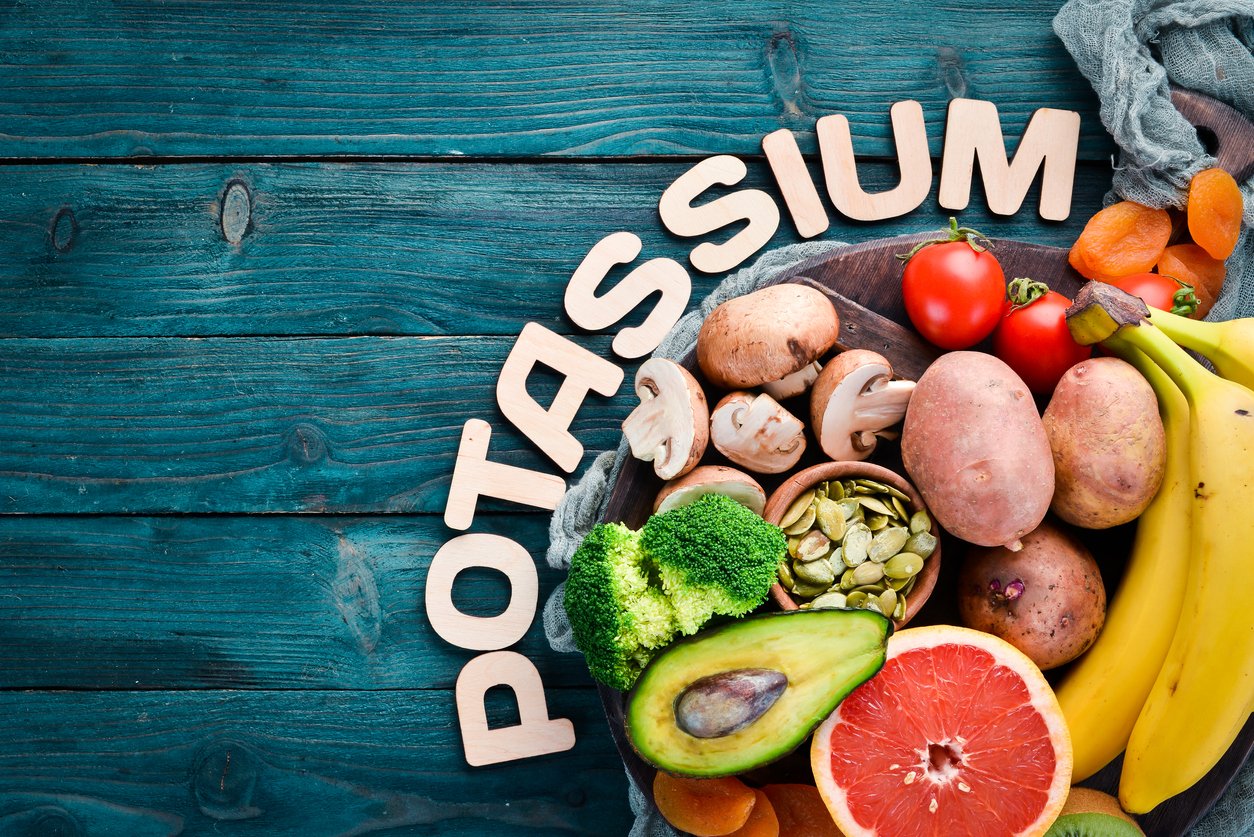
People with high blood pressure are encouraged to cut way down on sodium. Part of that equation appears to be the ratio of potassium to sodium, which in the standard modern diet is weighted heavily — and unhealthfully — in favor of sodium. When potassium intake increases to match that of sodium, your body can balance the electrolytes that regulate your nervous and cardiovascular systems.
Increasing dietary potassium may lower high blood pressure by inducing vasorelaxation, or reduction of tension in blood vessel walls. Potassium affects the amount of fluid stored in your body and how much goes out in your urine. If your body is retaining water, you’ll have more fluid in your blood, putting extra pressure against your blood vessel walls, and raising blood pressure.
Adding just over half a gram of potassium per day results, on average, in a 1-point reduction in systolic blood pressure (1.0 mm Hg, to be precise). A single point may not sound like much, but when study participants supplemented with two grams of potassium, they saw their blood pressure decrease by an average of three systolic and two diastolic mm Hg. In terms of public health outcomes, that big a diastolic drop in an entire population would drop the incidence of stroke by 15% and that of heart disease by 6% — saving more than a million lives per year.
Adding more potassium achieves the greatest benefit for those with already elevated blood pressure. The closer you are to already having normal blood pressure, the less impact each additional gram of potassium will have. And while it’s possible to get potassium from supplements, you can easily increase your intake through diet. Avocados, sweet potatoes, spinach, watermelon, coconut water, white beans, edamame, and, of course, bananas all contain high levels of potassium.
Does Magnesium Help Lower Blood Pressure?
The modern diet also leaves many people deficient in magnesium, another mineral that plays a crucial role in modulating blood pressure. Clinical studies have revealed a wide variation in the effects of added magnesium — some show no change in blood pressure, and others find significant effects. In general, magnesium achieves the greatest reduction in blood pressure in people with the most severe hypertension.
In some studies, magnesium intake of 500–1,000 mg per day may reduce high blood pressure by as much as 5.6 mm Hg for systolic and 2.8 mm Hg for diastolic. The most effective mineral treatment for hypertension appears to be a combination approach — increased magnesium and potassium, coupled with a reduction in sodium. This protocol often achieves the same result as a single antihypertensive drug, without the negative side effects.
In fact, the US Food and Drug Administration (FDA) allowed a qualified health claim about magnesium and blood pressure starting in 2022. One variation of the claim that food and supplement manufacturers can use in packaging and advertising goes as follows: “Inconsistent and inconclusive scientific evidence suggests that diets with adequate magnesium may reduce the risk of high blood pressure (hypertension), a condition associated with many factors.” Not exactly a marketer’s dream, but far more than the FDA allows for most other nutrients and conditions.
Low Sodium Diet and Hypertension
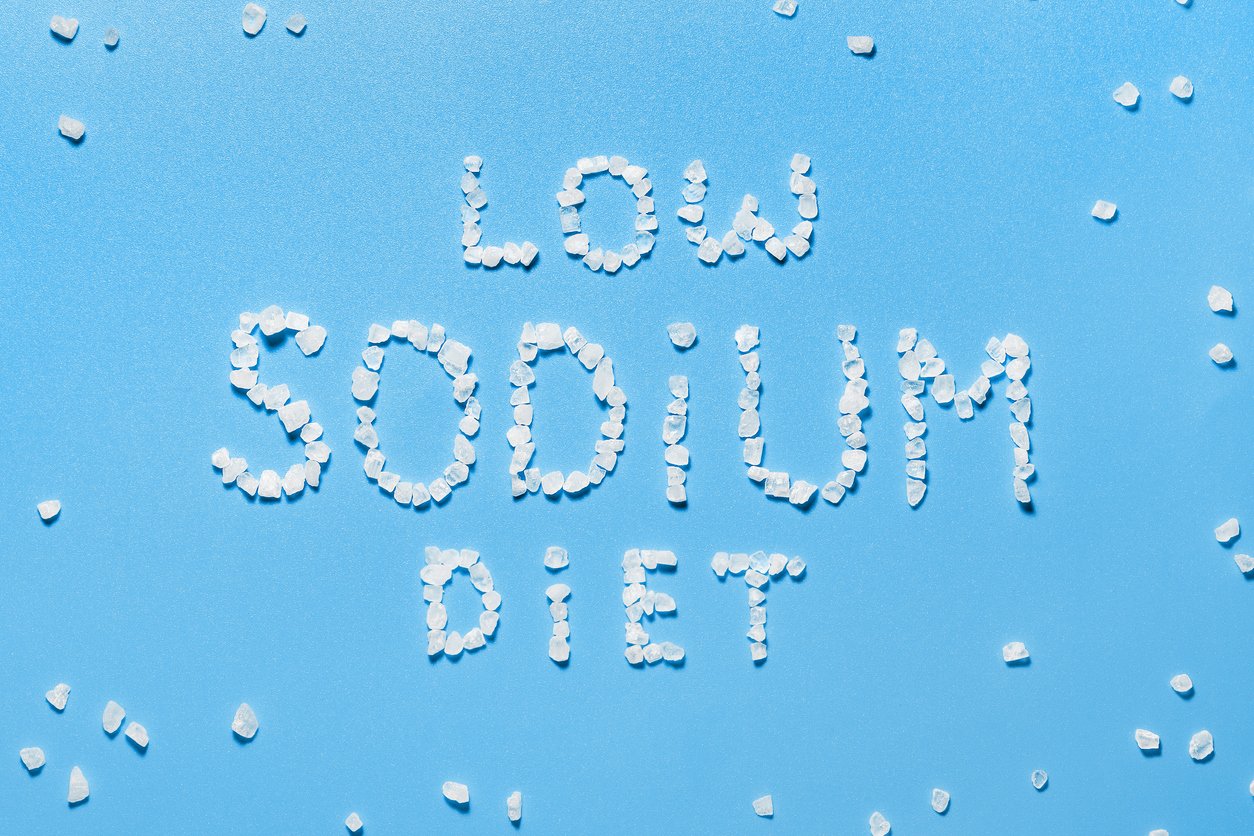
Added potassium and magnesium appear to work to regulate blood pressure largely because the modern diet is so high in sodium. So it stands to reason that reducing salt intake can make a big difference in managing hypertension.
A whole foods, plant-based diet is naturally low in sodium — the trick is not to add sodium in its many forms and disguises. These include straight-up salt, such as table salt, Himalayan pink salt, and Celtic sea salt, as well as soy sauce and its variations — tamari, shoyu, and liquid aminos. Sodium also appears in many sauces, dips, spreads, and other condiments, in addition to most packaged foods.
A version of whole food, plant-based eating called SOS-free (SOS stands for sugar, oil, and salt) is especially good for those whose blood pressure spikes when they ingest excess sodium.
How much is too much sodium for blood pressure? While the exact sodium threshold varies by individual and also depends on how much potassium and magnesium a person consumes, you generally want to keep your sodium intake to fewer than two grams per day (which, since salt is 40% sodium and 60% chloride, comes to five grams of table salt, or ⅞ of a teaspoon). That’s the amount shown to reduce blood pressure and the risk of cardiovascular disease, stroke, and coronary heart attack.
A large 2013 meta-analysis of 34 clinical trials showed that a reduction in salt intake may improve cardiovascular health, not only through reduced blood pressure but also by benefiting vascular and arterial function.
Too much salt, on the other hand, may provoke water retention, leading to a condition of high flow in arterial vessels. This can cause fluid to collect in the lower legs or abdomen, also known as edema.
Overall, reducing sodium intake has been identified as one of the most cost-effective measures countries can take to improve population health outcomes.
9 Best Foods for Lowering Blood Pressure
So now that you know the nutrients implicated in hypertension, as well as those that can help to normalize blood pressure, it’s time to get specific. Here are nine great foods to include in your diet to keep your blood pressure at a healthy level. Since they’re all plant-based, they’re also naturally good sources of fiber. Some are rich in potassium and/or magnesium, and some deliver healthy nitrates that your body can turn into NO. After a brief introduction to each food, I’ll also share a couple of fun and delicious recipes that will have you eager to add them to your blood pressure-lowering diet.
1. Garlic
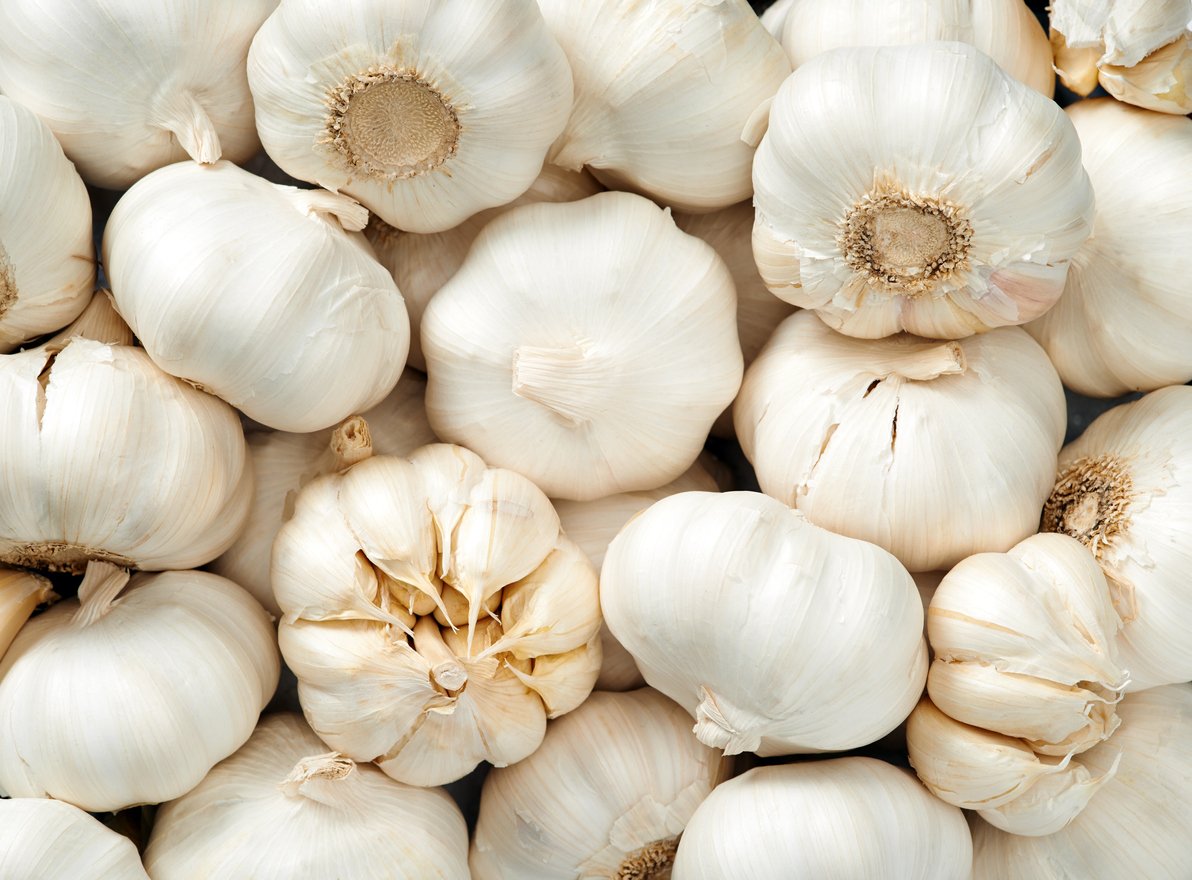
Garlic may reduce blood pressure largely thanks to one of its most potent components, allicin. This organosulfur compound, which is responsible for the bulb’s strong odor, appears to mimic the effect of angiotensin-II inhibiting drugs, as well as acting as a powerful vasodilator. A 2021 randomized controlled trial of 110 participants with nonalcoholic fatty liver disease found that even garlic powder significantly reduced blood pressure compared to a placebo. (I’d love to know what the researchers used as fake garlic powder for the placebo group!)
Here are two garlic recipes to lower blood pressure:
- Green Grain and Sprout Bowl with Garlic Sauce
- Sautéed Garlic Green Beans
2. Ginger
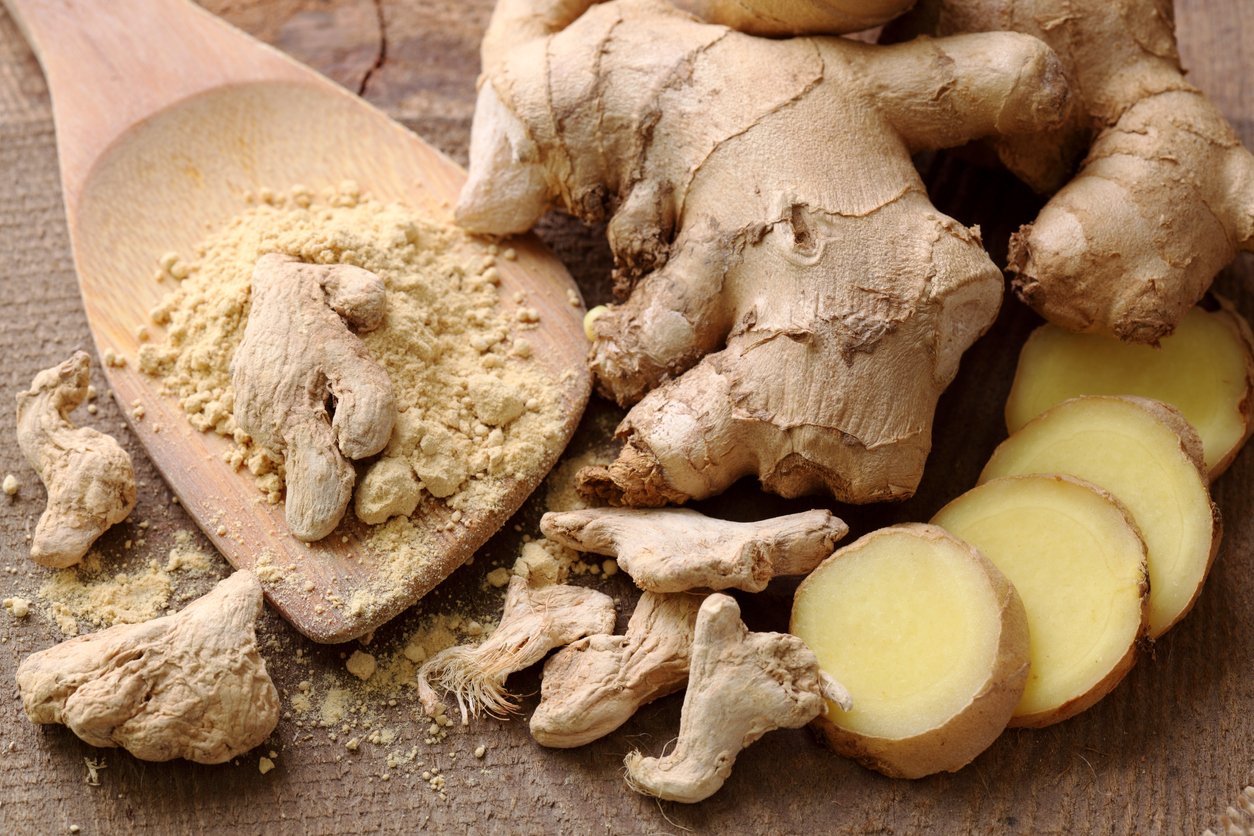
Ginger is another pungent spice that can help normalize high blood pressure. Compounds in ginger fight inflammation and oxidation, suppress platelet formation, and reduce serum cholesterol. One of these plant compounds, 6-gingerol, has been studied extensively by pharmaceutical researchers looking for better hypertension drugs with fewer side effects.
A 2018 randomized controlled trial used capsules of powdered ginger so that the participants, all of whom had type 2 diabetes, couldn’t tell if they were in the experimental or placebo group. After eight weeks, the group that received the ginger pills had significantly lower systolic and diastolic blood pressure, as well as lower scores on pulse pressure and mean arterial pressure. The former refers to the difference between systolic and diastolic, an indicator of arterial suppleness, while the latter, a complex combination of systolic and diastolic, is thought to represent blood flow to various bodily organs.
A 2019 meta-analysis of multiple studies looking at the effects of powdered ginger on blood pressure showed that on average, supplementing with ginger dropped systolic blood pressure by 6 mm Hg, and diastolic by 2 mm Hg.
Here are two ginger recipes for hypertension:
- Blueberry Ginger Smoothie
- Ginger Stir-Fry Snow Peas and Carrots
3. Beets

Beets and beet greens are both rich sources of nitrates, which your body uses to make that all-important nitric oxide (NO). (Wouldn’t it be great if someone made a series of public service announcements about beets with the tagline, “Just say NO?” On second thought, maybe that would just confuse people — I’m just workshopping here!)
Beets are also chock-full of antioxidants, as well as magnesium, potassium, and several other minerals. A study of healthy older adults who drank beet juice for a month found their systolic and diastolic blood pressure dropped by 6 and 4 mm Hg, respectively. However, a 2022 review of seven studies conducted between 2013 and 2020 found that the benefits of beetroot juice were limited to systolic blood pressure, and didn’t seem to improve diastolic in patients with hypertension.
To test the benefits of beets for blood pressure, try out these recipes:
- The Unsweet Smoothie
- Purple Powered Lunch Bowl with Crispy Chickpeas
4. Spinach
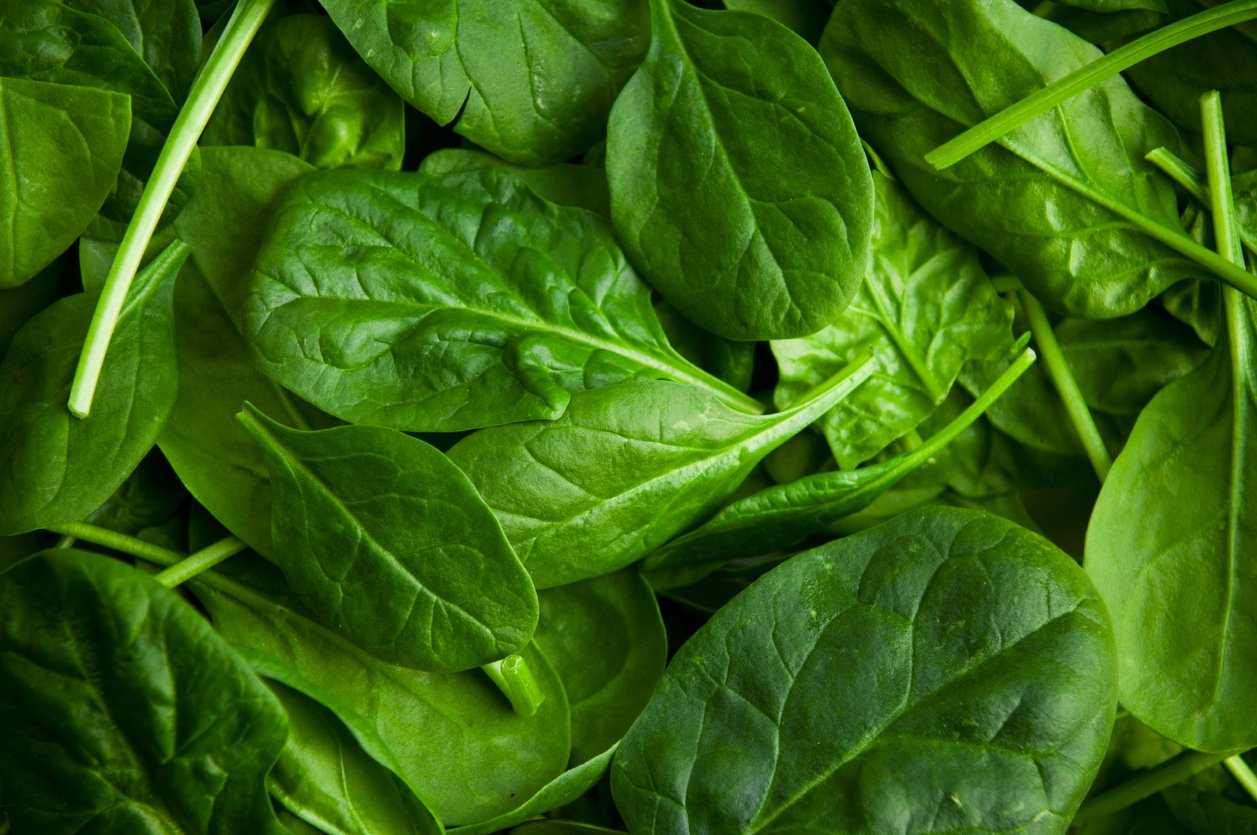
Popeye ate spinach at his most stressful moments, which is fitting because spinach is another food that can combat hypertension. A 2015 study found that giving healthy adults a single serving of spinach soup per day was able to significantly lower both systolic and diastolic blood pressure after just seven days. If you’re wondering, the control group got similarly hued asparagus soup, which was extremely low in nitrates. They also experienced a drop in blood pressure, but not nearly as large as the spinach group.
To reap the benefits of spinach for blood pressure, give these recipes a go:
- Vitality Smoothie Bowl
- “Cheesy” Spinach Lasagna
5. Pomegranates
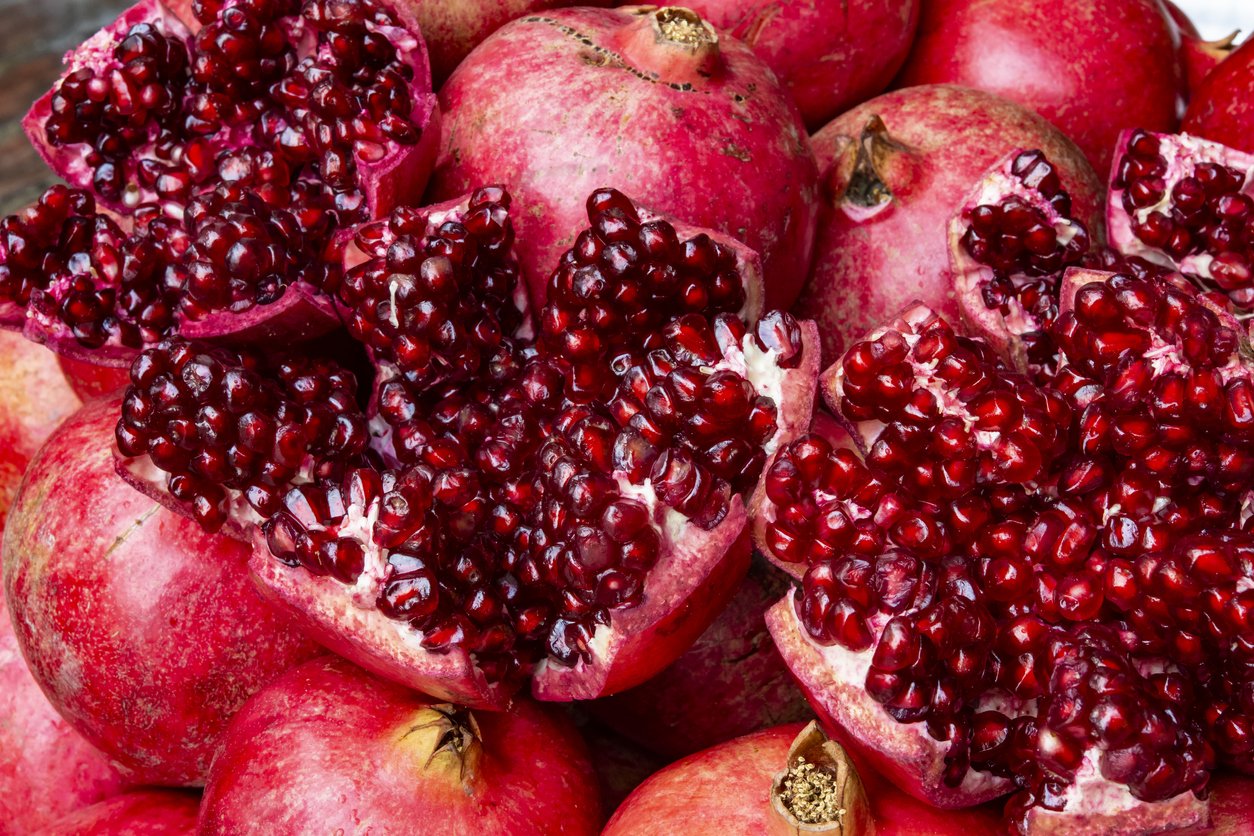
Pomegranates are another colorful food that can lower your blood pressure. Researchers have found that pomegranate juice can reduce hypertension by inhibiting serum ACE activity (just like the ACE inhibitor class of antihypertensive meds). A 2017 meta-analysis of eight randomized placebo-controlled clinical trials found that pomegranate juice lowered systolic blood pressure by an average of 5 mm Hg, and diastolic by around 2 mm Hg. Interestingly, it had similar effects regardless of the length of the trial or the amount of pomegranate juice consumed.
To see the benefits of pomegranate for blood pressure, try making one of these recipes:
6. Oats
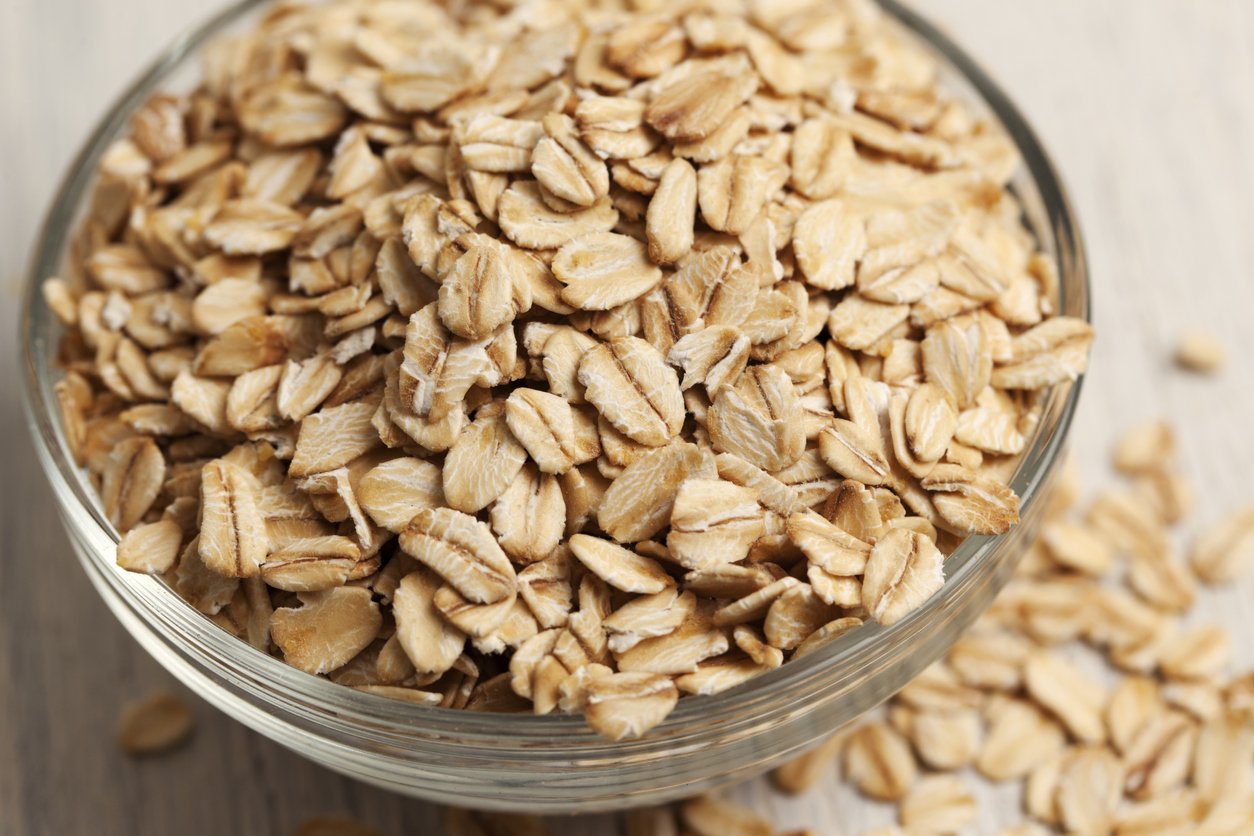
Oats may lower blood pressure thanks to oodles (that’s a technical scientific term) of fiber. A small 2002 randomized placebo-controlled clinical trial (including 18 participants with mild to borderline hypertension) found that adding whole oat cereal to the diet dropped systolic by 7.5 mm Hg and diastolic by 5.5 mm Hg in just six weeks. A larger 2021 trial asked participants in the experimental group to supplement their diets with oat bran. Compared to controls, their blood pressure dropped, so much so that, on average, their prescriptions for antihypertensive drugs were reduced.
To see how oats and blood pressure work together, try the recipes below:
7. Watermelon
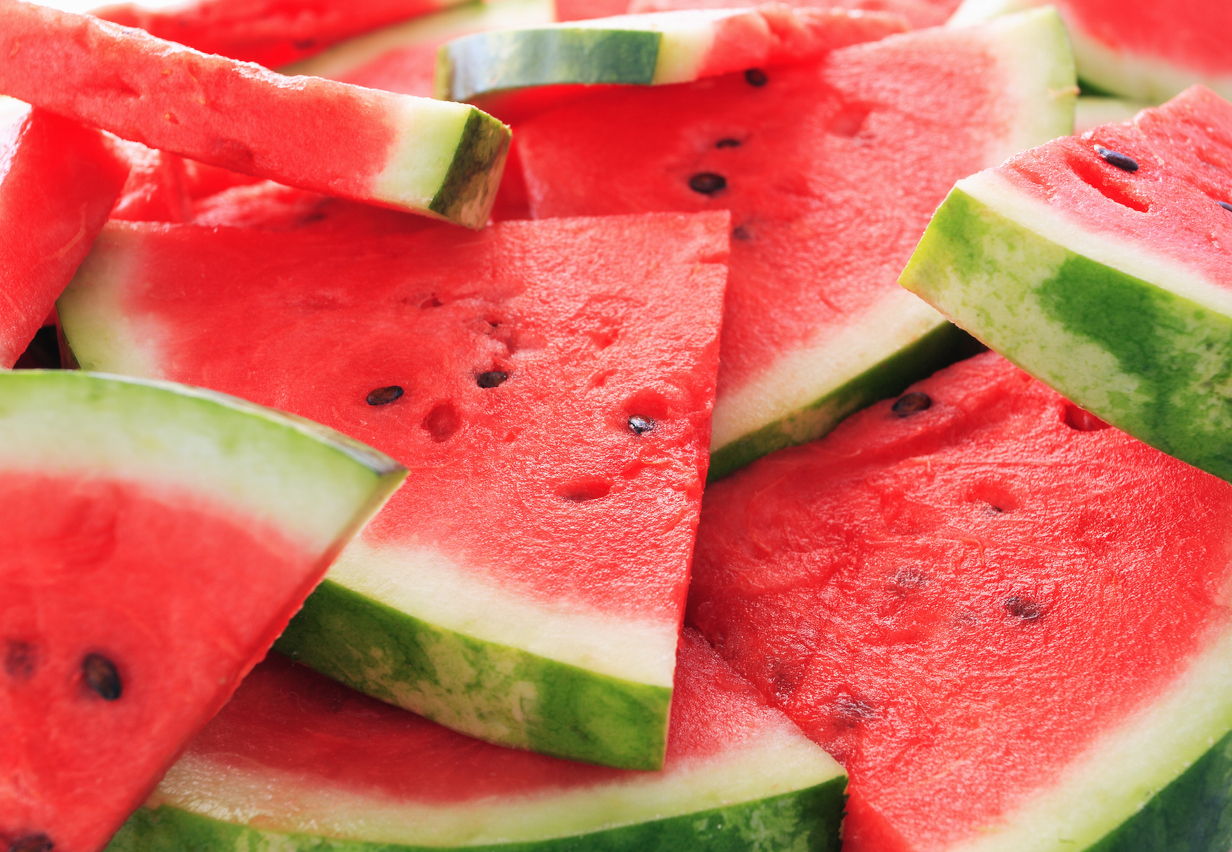
Watermelon is so yummy; I don’t even have to try to convince folks that it’s one of the healthiest foods around. But it’s earned inclusion, so here goes. Watermelon contains a couple of signature amino acids, L-citrulline and L-arginine, which are both chemical precursors of that all-important NO. It’s also rich in antioxidant phytonutrients like polyphenols and carotenoids that have also been shown to support cardiovascular health.
To eat watermelon for blood pressure, try one of these recipes:
8. Blueberries
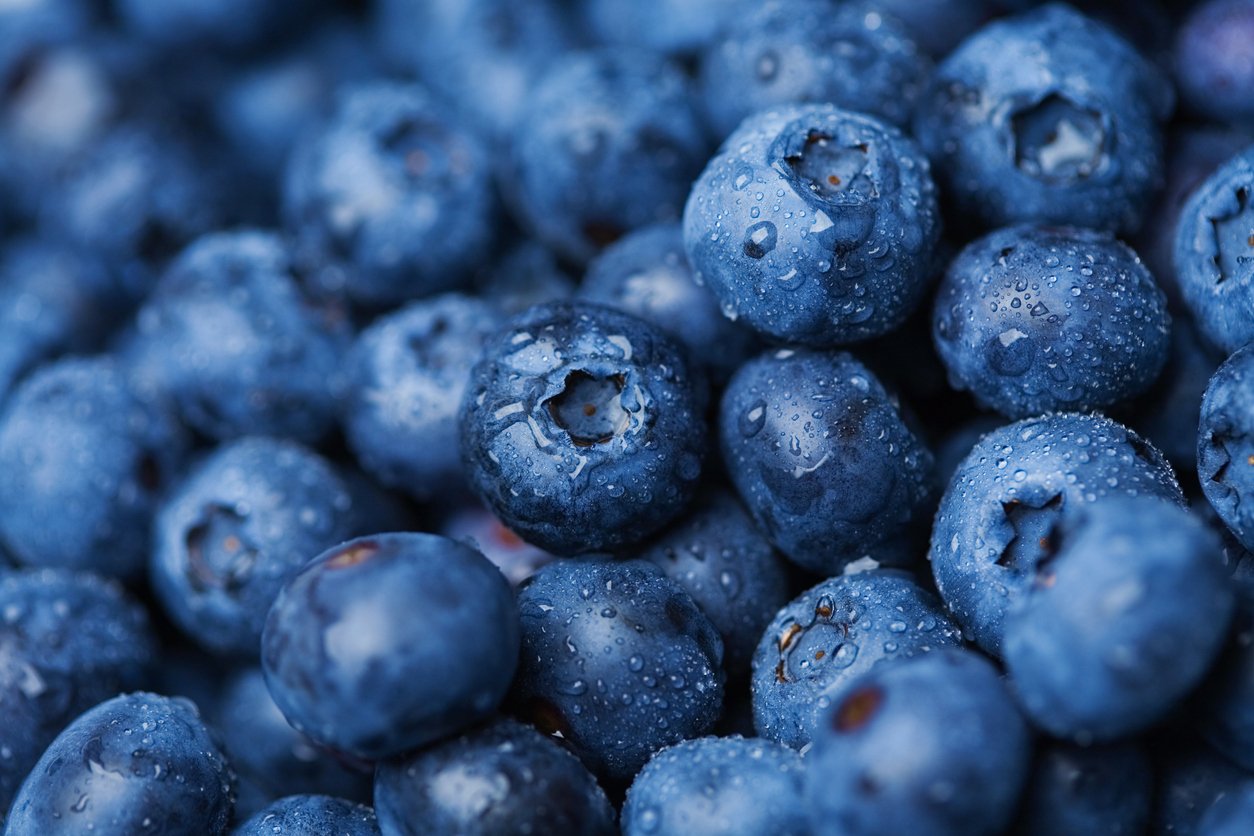
Blueberries are the cardiovascular stars of the fruit family, thanks to their impressive array of polyphenols. A 2010 study of obese adults with metabolic syndrome, for example, found that drinking a frozen blueberry juice drink lowered their blood pressure significantly (6% for systolic and 4% for diastolic). The benefits were confirmed in a 2015 study of postmenopausal women with hypertension; just 22 grams per day of freeze-dried blueberry powder lowered their average blood pressure by 7 mm Hg (systolic) and 5 mm Hg (diastolic) in just eight weeks. The blueberry group also had more supple arteries and higher NO levels in their blood.
To see how blueberries and blood pressure work together, check out these recipes:
9. Flaxseed
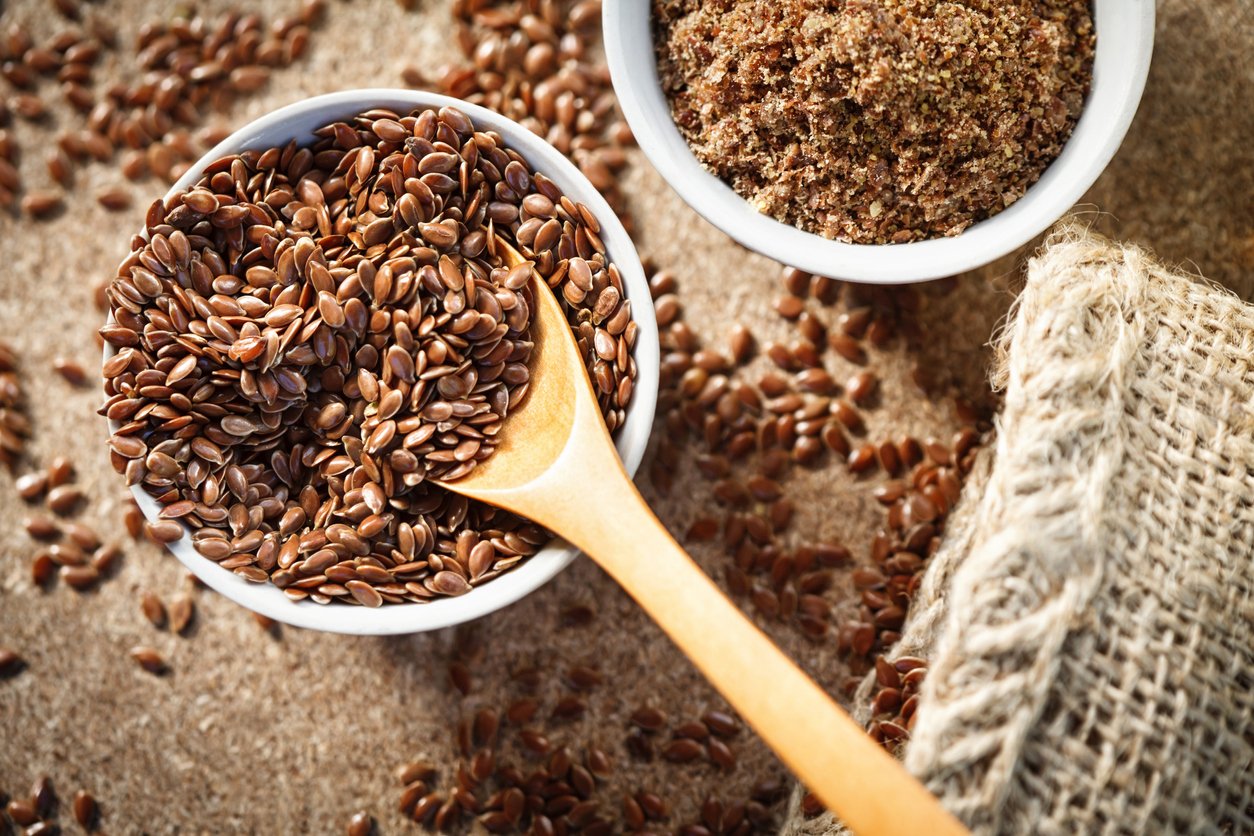
So far, flaxseeds have achieved the highest documented reduction in blood pressure for any single food. A 2014 “gold standard” randomized, double-blind, controlled clinical trial found that 30 grams per day of ground flaxseed helped people with hypertension lower their systolic blood pressure by an average of 10 mm Hg, and their diastolic by 7 mm Hg. The following year, a meta-analysis of 11 studies found a similar trend, albeit with a smaller effect size. Still, it’s clear that flaxseeds can provide benefits to those looking to control their blood pressure, possibly due to their high concentration of antioxidant lignan precursors.
Flaxseed and blood pressure work together well in the recipes below:
Eat for Your Heart!
High blood pressure or hypertension is a common disorder and it’s directly linked to the #1 cause of death on the planet — heart disease. It’s also highly treatable and, in many cases, preventable. While prescription drugs are the default medical approach, dietary interventions can help prevent and control high blood pressure, especially when those diets include particular nutrients that lower blood pressure.
Whether you have high blood pressure or not, by incorporating the plant-based foods mentioned above, you’ll have a totally natural way to improve your cardiovascular health. And your overall health, too — because unlike with most medications, the only side effects of a healthy diet are good ones!






















































